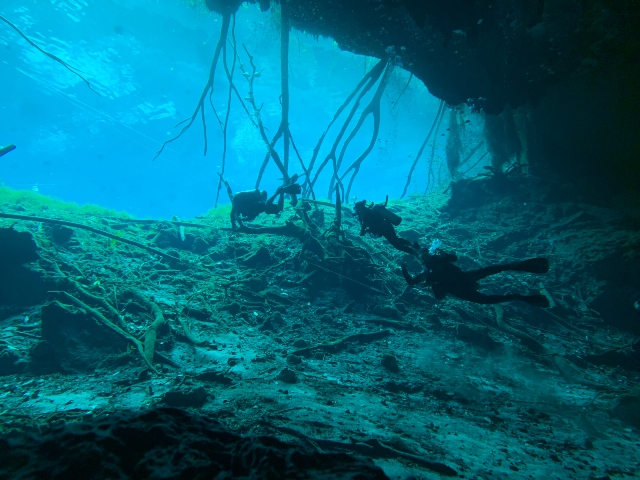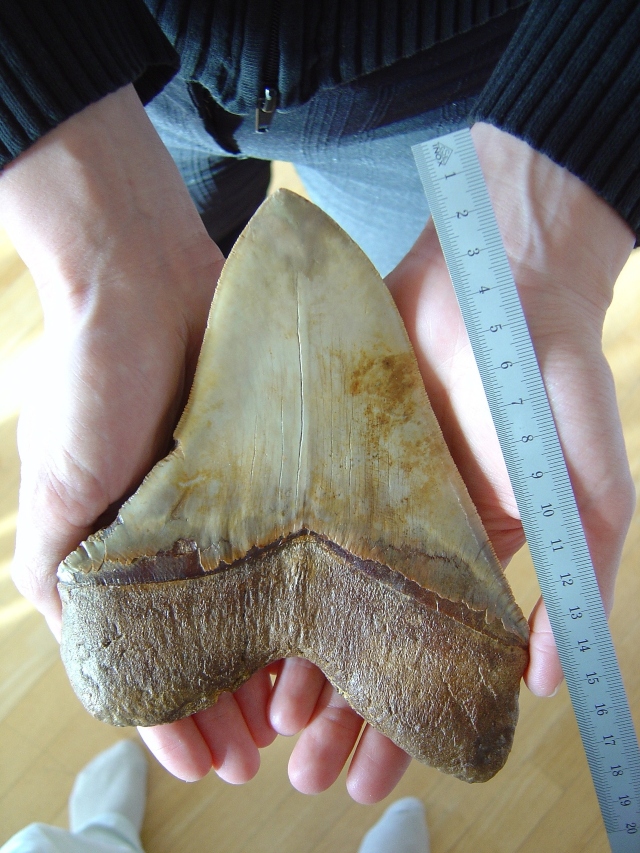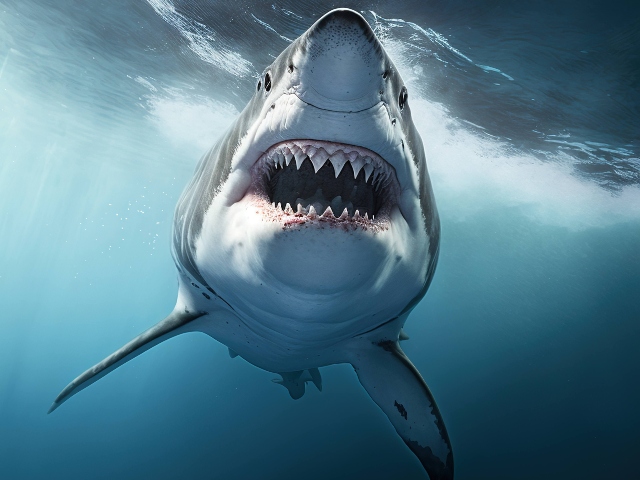
-
Divers Find HUGE Megalodon Teeth In A Flooded Inland Cave In Mexico
03 Oct 2023 by Heinrich in Animals, Nature, Tech/Sci, World
[imagesource:freeartimages]
Divers have made an interesting discovery in an inland cave in Mexico – teeth from one of our pre-historic nightmares, the Megalodon.
These 15-metre behemoths cruised the oceans about three million years ago, making today’s Great Whites look like goldfish, but what were they doing in a cave in Mexico?
The cave, or rather a sinkhole, found in Maderia, has been the site of fossil hunters looking to understand ancient creatures by examining their teeth. Speleologist and photographer Kay Nicte Vilchis Zapata and her speleologist partner Erick Sosa Rodriguez discovered the Megadolon fossils while diving in the sinkhole.
Fifteen dental fossils were found in the district of Cholul, which was once thought to have been under the sea.

[image:befunky]
Out of the 15 fossils, 13 of them belonged to three different species of shark, one of which being the once-deadly megalodon. Back in 2019, Zapata told local media: “We were looking at the wall and suddenly I saw a little something, I went closer and I saw that it was a tooth, that was the first and apparently it belonged to a sawshark.”
They concluded that the geologic timescale for the megalodon teeth extended from around five million to two and a half million years ago. Speleologist Sosa Rodriguez explained: “It is just proof of what scientists have already studied and written about; what kind of wildlife lived here millions of years ago when this was part of the sea.”

[image:befunky]
Research earlier this year suggested that the megalodon’s body temperature could be the reason for its extinction. Scientists have suggested that the megalodon was able to maintain a body temperature that was about 7C warmer than the surrounding water.
Based on analysis of tooth enamel from the ancient shark, the findings might help explain why it went extinct 3.6 million years ago. According to the study – which was published in the Proceedings Of The National Academy Of Sciences journal – the amount of energy the megalodon used to stay warm could have contributed to its extinction.
“Studying the driving factors behind the extinction of a highly successful predatory shark like megalodon can provide insight into the vulnerability of large marine predators in modern ocean ecosystems experiencing the effects of ongoing climate change.”
The Centre for Diverse Leadership in Science explained: “Maintaining an energy level that would allow for megalodon’s elevated body temperature would require a voracious appetite that may not have been sustainable in a time of changing marine ecosystem balances when it may have even had to compete against newcomers such as the great white shark.”
Whatever the reason for their extinction, is it bad to be glad they’re not around anymore?
[source:ladbible]
Latest News
-
Powerful South African Short Film ‘The Last Ranger’ Scoops Up Awards And International Praise
[imagesource: Cindy Lee Director/Facebook] A compelling South African short film, The L...
-
Caprice Summer Has Started With Brunch (But Better) This Saturday + Other Lush Camps Bay Parties
[imagesource: Instagram/cafecaprice] Is it just me or has Summer been taking its sweet ...
-
Notre-Dame Cathedral In Paris Restored And Ready For Grand Reopening After Devastating Fire
[imagesource:wikimedia] After five years of work and millions in donations, The Notre-D...
-
Self-Destructing Number Plates: The Future Of Gauteng’s Roads Or Spy-Tech Fantasy?
[imagesource:worldlicenseplates.com] What sounds like a James Bond movie is becoming a ...
-
I Changed My Relationship With Food And You Won’t Believe What Happened Next
[imagesource:supplied] As the festive season approaches, it's time to deck the halls, g...
-






























